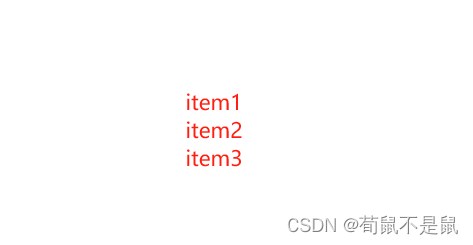为什么要使用nextTick?
vue中DOM更新是异步执行,相当于我们在修改数据的时候,视图是不会立即更新的,会先把新的数据攒一赞,例如假如v-for更新这三个数据item1和item2和item3,按照vue的特性dom更新的特性会把item1、item2、item3全部更新后才会更新dom,这个时候如果还没有吧这三个数据更新完的时候想获取item1的话就会无法获得item1的值,正是为了应对这种情况才vue出现了一个api:nextTick

作用实例:
1、修改dom元素进行判断在修改样式:
如果不加nexttick的话点击事件触发的时候,字符串变红,然后dom元素更新,但是条件判断并不是更新后执行的,所以第一次点击时时不会付出判断条件后面的语句的
<template><div><div :id="myid" class="" ref="str">123456789</div><button @click="changeColor()">修改dom元素</button></div>
</template>
<script>import {nextTick} from "vue";export default {data() {return {myid: ''};},created() {this.$nextTick(() => {console.log('3222', this.$refs.str)})},methods: {changeColor() {this.myid = 'color'this.$nextTick(() => {if (this.$refs.str.id == 'color') {this.$refs.str.className = 'background'}})// if (this.$refs.str.id == 'color') {// this.$refs.str.className = 'background'// }}}}
</script>
<style scoped>#color {color: red;}.background {background: khaki;}
</style>运行效果:

2、在生命周期函数created中操作
因为生命周期created函数是在dom还没有渲染前使用的函数,如果在creted函数中使用dom肯定会报错,所以在函数中可以用nextTick来获取dom如图所示
如果想在created之前更新dom元素就需要要用$nextTick
<template><div><input ref="obj" type="text" :value="string"></div>
</template>
<script>export default {data() {return {string:'samsung',};},created() {this.$nextTick(()=>{this.$refs.obj.value = 'apple'})},mounted(){console.log(this.$refs.obj.value);}}
</script>运行效果:

当dom元素更新后控制台打印samsung,最后在执行this.$nextTick中的内容

——基于FPGA的电梯控制系统)




概述)
分文件编程)







![[C语言]时间戳](http://pic.xiahunao.cn/[C语言]时间戳)


![[蓝桥杯 2023省模拟题]判断蓝桥](http://pic.xiahunao.cn/[蓝桥杯 2023省模拟题]判断蓝桥)
